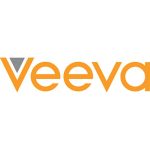The centuries-old common law doctrine of assignor estoppel is intended to prevent an inventor from making inconsistent representations about a patent’s validity by first warranting the patent is valid when assigning rights, but then later claiming the patent is invalid. In 2021, while upholding the doctrine in Hologic v. Minerva Surgical, the Supreme Court instructed the Federal Circuit to clarify its applicability and provided three examples of “non-contradiction” situations in which the doctrine of assignor estoppel should not apply.
We spoke with Mauricio Uribe, a patent lawyer with Knobbe Martens, to discuss areas in which assignor estoppel may not apply and what medical device inventors and acquiring companies should do to ensure they comply with the Supreme Court and Federal Circuit’s most recent clarification of the doctrine.
What is assignor estoppel and how has it traditionally been defined?
Uribe: Assignor estoppel is an equitable doctrine. Basically, it says that if you’re going to make certain representations or claims about a patent that you are selling, you can’t later contend that the patent or claims are invalid, because you are undercutting the principal by which you gained value from the sale. In essence, you can’t sell a patent and then later say that for some reason this patent is unenforceable or do something to make that patent otherwise unenforceable.
The tests and exceptions defined through legal precedence are the practical applications of determining when assignor estoppel kick ins or applies.
There are three big cases that set these principles, and they are Westinghouse v. Formica, which said assignor estoppel is an equitable doctrine and an assignor cannot later challenge the validity of that patent; Scott Paper v. Marcalus Mfg., which found that if a patent has become public domain assignor estoppel does not apply; and Lear v. Atkins, which distinguished differences between licensee estoppel and assignor estoppel, finding that the principles of assignor estoppel are much stronger.
Most recently, the Supreme Court heard Minerva v. Hologic. This case involved what I would call the sweet spot of assignor estoppel, where you have a small company with a CEO who invented something. The CEO later sells the company and transfers those assets and gets the benefit of that sale. The former CEO then sets up another company and creates a similar device.
The District Court found in favor of Hologic and agreed that assignor estoppel applied. The inventor argued that it did not apply because the claims for the new device were broader than they had in the original patent.
The case went to the U.S. Supreme Court, which did recognize the validity of the principle of assignor estoppel, but also said that in certain contexts this presumption that validity was part of the transaction may not apply. Its decision highlighted three scenarios where assignor estoppel may not apply:
- If an assignment takes place and later the claims become broader than those made in the original patent, and it is not possible for that inventor to have known—and therefore made—the broader claims because those inventions didn’t exist at that time
- If the law has changed pertaining to validity of the patent
- If the claims become materially broader after the assignment
This third exception was at the heart of the case. The assignor argued that the claim scope of the new invention was much broader than the original patent claims when the asset was transferred. The federal circuit court looked at the prosecution history and found that the inventor was aware of this broader scope of claim at the time the original patient was filed. But the Supreme Court’s ruling did determine this exception when subsequent claims are materially broader, which companies should be aware of.
How did this ruling change patent agreements?
Uribe: You always want to get your assignment upon completion of filing the patent application. Often, employment agreements include an obligation to assign, which is in theory the assignment of the invention, and any subsequent assignment would be considered a confirmatory or supplemental assignment. But, if you are relying on that employee agreement as the assignment, and then the employee leaves well before the application is finished and the the claims get really broad, there is no way the employee could have known, as the inventor, what a future claim would have looked like.
If you don’t want that exception to apply, you can get a subsequent or confirmatory assignment upon filing of the application and upon issuance if the claim scope has changed. So, you may have a series of assignments where you document that you are keeping your inventors aware of the scope, especially if the claims scope has gotten broader or changed directions, or if the claim has been recast in slightly different language.
The more you can get a record from the inventor saying, I am aware of the change and I had a chance to raise my hand and say that’s not right, then you have documented that the inventor knew what was going on.
The other thing you want to consider, and this is going to be a strategy, is going for a very broad claim when you first file a patent application, and then narrowing it.
What are the pros and cons of this strategy?
Uribe: There are restriction requirements. Often, the original patent application will have a large claim set, but you are only entitled to one patentably distinct invention with each patent application that you file. So, if the examiner believes that there is more than one invention being claimed, they will issue a restriction requirement, which means you have to separate these into separate patent applications.
Because of the restriction requirements, patent applications often lead with a narrower scope to establish some kind of bastion of patentability. Then, if you are successful, you can file broader continuations. Alternatively, you may want to lead with at least one broad claim at the very first filing. Once you get the assignment with that first application with at least one broad claim, then you can establish that the inventor was aware of how broad a scope this invention might have.
Even if you’re not going to pursue the broader claim, we sometimes put claims at the end of an application as clauses to establish subject matter. Essentially, we draft a couple of super broad claims, even if they aren’t in the claim set, tuck them into the application and make sure the inventor reads them. You’re saying, these are a couple sample broad claims that we think down the road we might pursue, and if the inventor approves the application, you file the application with those clauses. By doing this, it would be very hard for the inventor to subsequently say they were not aware that there was a potential claim that was this broad.
The more you can build that record, the greater the chances that assignor estoppel will apply in those cases where the inventor does receive value from the patent sale, and then later forms a subsequent company and wants to challenge the validity of the patent.
You mentioned employee agreements, are there any lines or guidance in terms of making sure you’re not being too broad in limiting an employee’s ability to use their skills or expertise at another employer or in their own future company?
Uribe: These cases typically pertain to scenarios where there is some value that could come back to the owners of the company as inventors. In general, employees are not getting the value and they are not making the assertions of validity, so assignor estoppel will not apply to them.
If you have a key inventor and an asset that ends up being the value proposition, then you might at that point want to say, hey we’re getting ready to do this and we need you to sign this agreement, and in return we’re going to give you X value or consideration.
If you are the company acquiring the patent, what steps should you be taking to protect yourself against potential assignor infringement?
Uribe: You need to be aware of the claim scope and have the assignor and all the inventors sign off on that as part of your due diligence. Then you can show that, at least at the time of the transaction, this is what was known and this is what was covered.
That can help settle some of these factual disputes, where you can say all the inventors signed off on this and they were aware of the broad scope that we envisioned as part of the worth of these assets. Likewise, if they didn’t sign off or were only aware of this narrow scope, then you know from a due diligence standpoint that there is an exception potential.
If you see that a number of inventors did proactive assignments, but never reviewed the final claim scope; there’s an issue. If you are buying an asset for $10 million dollars, but it turns out that the key inventors could potentially challenge the validity of the patent, you want to identify that as part of your due diligence. Then you can negotiate the price or go back and give these new claim scopes to the inventors to make sure they are aware of them.
At the end of the day what you’re doing is creating a better record that will create some circumstantial evidence to support assignor estoppel. You want to have a record of signings and conversations to rely on, and if the inventors have signed off on only a very narrow scope of claim, you want to be aware of that at the time of the sale.
Should acquiring companies be concerned about employees claiming ownership or infringement of a patent they worked on, or is this largely a concern with assignors?
Uribe: That’s always a concern and should be part of due diligence. Did the company you are acquiring get and document inventorship correctly?
When we go back to enforceability under assignor estoppel, if a company sells a patent and it turns out that an inventor should have been named but was not included, I think it would be estoppel because the assignor made those assertions that the patent is otherwise enforceable.
But you do want to ask these questions as part of due diligence. For example, what was the original idea submission and who was identified in that document? Who attended the disclosure meetings? Who reviewed the application? If you notice that person C was in the original document and attended these meetings, but they are not named as an inventor, you want to do some investigation as to why that person was not named. But generally, assignor estoppel does not come up in relation to former employees, because those individuals did not make the assertions about the validity of the patent.








